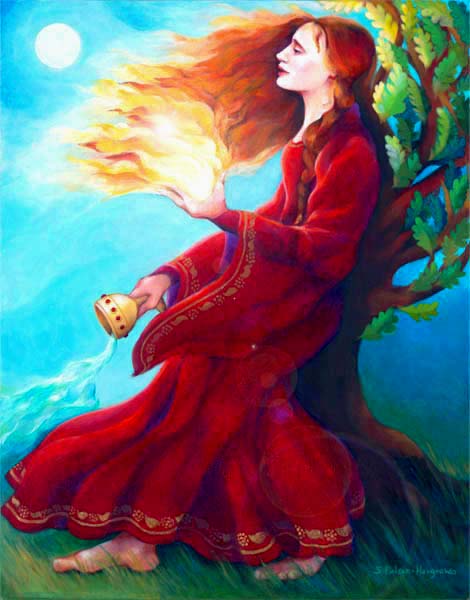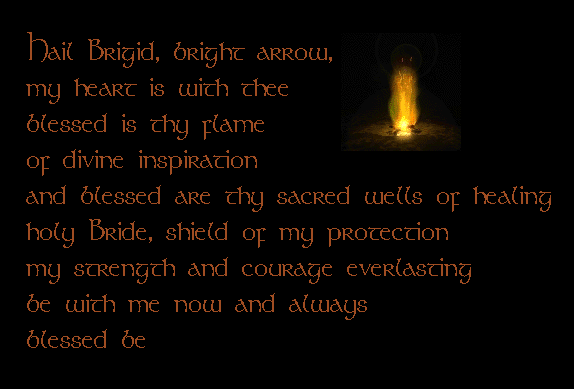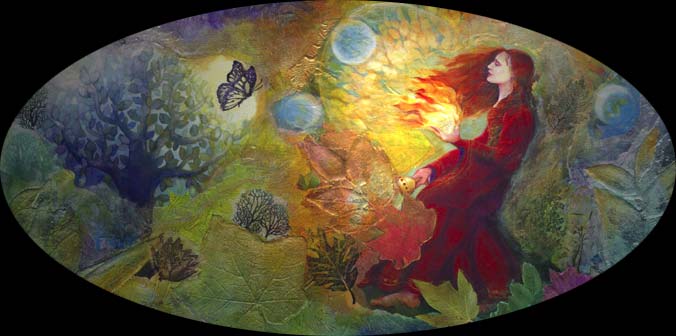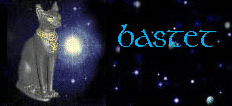Brigid is one of the most enduring and beloved of the ancient Celtic goddesses. She was a matron goddess to healers and midwives, bards and poets: to the smithies who worked in gold and iron she was the very forge and flame of inspiration itself. As a goddess of compassion, hearth and home she was also considered a great protector of women, children and animals.
Patricia Monaghan wrote the following of Brigid in her book “The Goddess Path”:
Brigid’s primary symbol is fire, for her very name means “bright arrow” or simply “the bright one”. Almost into modern times, the ancient worship of the fire goddess Brigid was practiced at her sacred shrine in Kildare, where nineteen virgins tended the undying fire and where, on the twentieth day of each cycle, the fire was miraculously tended by Brigid herself. There, into the eighteenth century, the ancient song was sung to her: “Brigid, excellent woman, sudden flame, may the bright fiery sun take us to the lasting kingdom.”
But for more than ten centuries the Brigid invoked was a saint, rather than a goddess, and her attendants were nuns rather than priestesses. After the Christianization of Ireland in the fifth century, the shrine at Kildare became a convent where the ancient rites nevertheless continued undisturbed. Six hundred years later the ever-burning fire was doused by Henry de Londres, archbishop of Dublin, who saw the clearly pagan meaning of the flame.
For many centurie s the fire remained doused, but in 1993 the sisters of Saint Bridget, called the Brigantines, re-lit the sacred fire of Kildare and now keep it continually blazing as a symbol of healing and peace.
Water, too, is a symbol of the goddess. At Kildare, more than thirty sacred wells once gushed forth; the largest well is still in use as a healing shrine.
Copyright 1997-2007
music may be paused here:
Goddess art courtesy of Susan Falcon-Hargraves
Animated flame, candle and unicorn gifs courtesy of gifanimations.com













